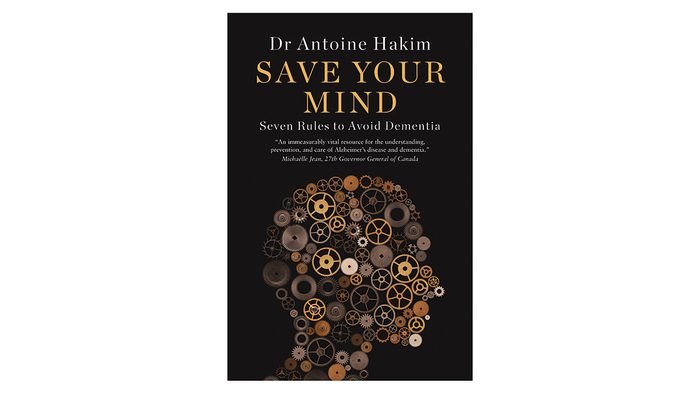
Food bought in fast food outlets seems to have become increasingly packed with more and more calories. A meal offered recently at the Canadian National Exhibition in Toronto was a hybrid between a doughnut and a croissant, called a Cronut Burger. When all the sides and drinks that went with the meal were added in, it clocked in at 7,500 calories, which is the equivalent of more than three days’ worth of calories in one meal. And in some of the southern states, a new kind of dessert is chocolate-covered bacon! These are just two examples of excess in the prepared foods we can buy. When the owners of the restaurant offering the Cronut Burger were asked about this meal, they said they were simply offering what people were asking for. There is an unfortunate emphasis on “bigness” among some young people, and the market is responding.
In North America, the volume of food consumed has gone up significantly over time, and the industrial methods of food production have made it possible to buy large quantities of processed food at reasonable prices. We tend to “supersize” everything. We offer double and triple patties in hamburgers, and pasta bowls are advertised as “never ending.” Even fresh fruit and vegetables suffer—modern peaches and strawberries may be large, but they are also less tasty.

Too Much Fat
The Cronut Burger was made up of two ground-bacon patties, a slice of peameal bacon, crispy bacon strips, and cheddar. It’s also accompanied by a side of bacon-cheese fries and a peanut butter and bacon milkshake. Every single component in the meal was laden with saturated fats, the most harmful variety. There are basically three kinds of fats: saturated, mono- unsaturated, and polyunsaturated.
- The saturated fats come mostly from animal fats but are also found in oils from tropical foods such as coconut. No more than 6% of your total caloric intake should come from these fats.
- Olive oil is the most common monounsaturated fat, but others in this category include canola and sunflower as well as oils derived from or contained in nuts. Provided we use them in moderation, monounsaturated oils will suppress the bad cholesterol in our blood. is is thought to partly explain why the Mediterranean diet reduces cardiovascular risk.
- Polyunsaturated fats are where all the omega varieties reside. Healthy polyunsaturated oils would have equal omega-6 and omega-3 components. Unfortunately, we eat a lot more omega-6 oils, which come from corn, and fewer omega-3 oils, which come from sh. e omega-6 oils have increasingly found their way into our diet, particularly in processed foods, because changes in government subsidies in the United States made corn oil plentiful and cheap. Other sources of omega-6 oils are cottonseed, which is used mainly in the Middle East, and soybean. Recent research has shown that increasing omega-3 fatty acid intake has a positive effect on cognition, particularly in people suffering from mild cognitive impairment.
The unhealthy fat that we should completely avoid is trans unsaturated fats (trans fats). Compared to saturated fats, trans fats pose far greater health risks. As mentioned before, saturated fats are mostly animal fats, found in foods such as egg yolk, salmon, and red meat. Trans fats are found in processed foods, such as margarine. These fats are primarily industrially made and their main purpose is to help increase the shelf life of these products. A recent review of 41 studies examined the association between saturated or trans fats intake and health outcomes. While it was found that consuming saturated fats was not connected to heart disease, stroke, or diabetes, the consumption of trans fats was associated with a 34-percent increase in all-cause mortality, a 28-percent increased risk of heart disease mortality, and a 21-percent increase in risk of heart disease! 29 Trans fats are definitely not good for you!
How can I eat less trans fats?
Luckily, it is easy to limit consumption of trans fats with a little preparation and insight into what you are eating. The nutritional facts label on the back of consumer foods is an effective tool for determining what is in your food. The amount of trans fat in a product is listed under this label. Keep a lookout for “partially hydrogenated oils” in the ingredients as well. Even if the product says trans fat–free, if it contains partially hydrogenated oils, it is a source of trans fat. Some foods to avoid are packaged snack foods and ready-made baked goods, such as cookies or pastries, frozen meals and entrées, cake mixes, and microwave popcorn.
A growing trend in North America is to “fatten” even the healthiest foods. Fish that is grilled, baked, or broiled is a very healthy food item, and while I enjoy the occasional fish and chips, eating battered fish increases the caloric content significantly and negates the benefits of eating the healthier food.
I recommend using olive oil in cooking and on salads as dressing. Increase fish intake without frying it because of its high omega-3 content. Walnuts and other nuts, which are recommended additions to your diet, are also high in omega-3 oils.

Too Much Salt
On average, we consume much more salt than the recommended level. More than 70 percent of the salt we consume comes from purchased processed food, restaurant food, and packaged consumable items. And extra salt brings more trouble: a recent study showed that in a nationally representative sample of U.S. children, the average sodium intake was 3,056 milligrams per day (equivalent to 7.8 grams of salt per day), and the more salt was consumed the more sugar-sweetened beverages were drunk, compounding the problem of obesity. Remember that the Canadian Stroke Network and other organizations recommend limiting our salt intake to 1,500 milligrams of sodium per day from all food sources.

Too Much Sugar
Since the 1970s, the average percentage of daily calories taken in from sugary drinks in North America has more than doubled. Despite this, the sugar derived from drinks represents only a third of all the sugar that a North American consumes—the rest of it comes from sugar in processed foods like breads, jams, ice cream and cakes, and canned food items such as salad dressings, tomato sauce, and cereals.
Not that this absolves soft drinks! A 2013 report showed that drinking one or more cans of sugary drinks a day is associated with an increase in the risk of diabetes in later life, confirming that consuming sugary drinks is associated with obesity. A more recent study reported that one percent of Japanese deaths but 30 percent of Mexican deaths under the age of 45 could be attributed to sugary drinks. The study also found that 25,000 deaths annually may be attributable to sweetened drinks in the United States.

Printed with permission from Save Your Mind, by Dr. Antoine Hakim, Barlow Book Publishing 2017
